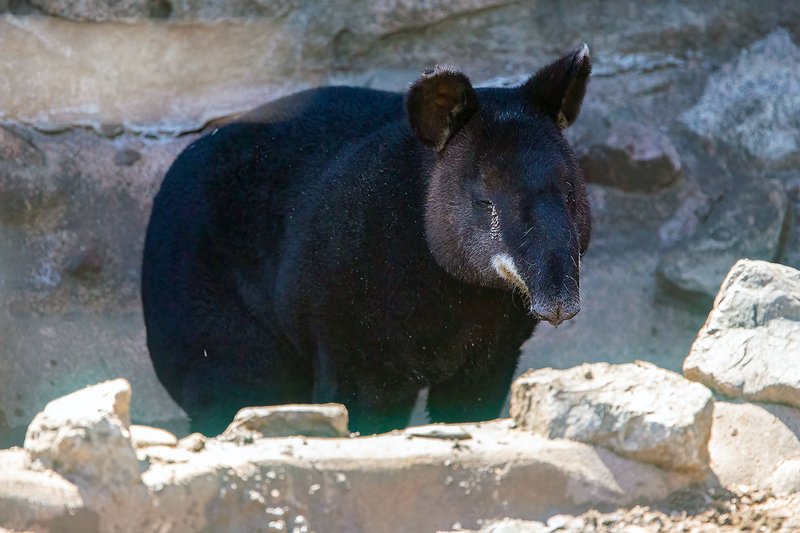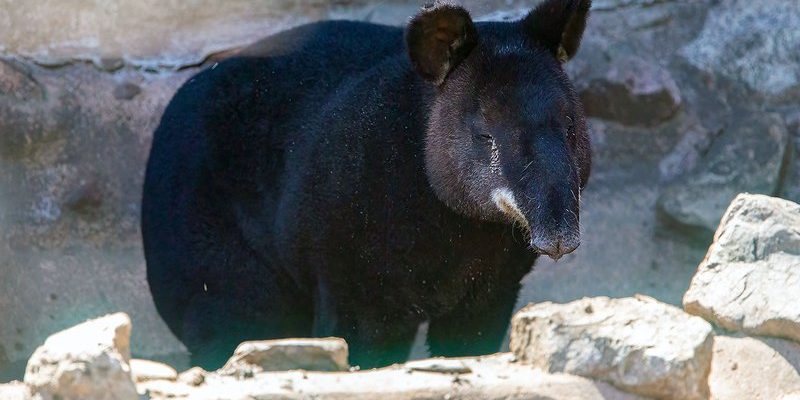
So, why are mountain tapirs culturally significant? Well, imagine a creature that roams the high-altitude Andes, a true survivor adapting to its unique environment. The stories about mountain tapirs reflect human relationships with nature and convey deeper meanings that connect us to the land. Let’s explore how these gentle giants are woven into the fabric of culture and folklore, showing us just how much they matter.
The Symbolism of the Mountain Tapir
When cultures choose an animal to symbolize beliefs or values, it’s often because the animal embodies certain traits. Mountain tapirs are known for their resilience, adaptability, and gentle demeanor. In many Andean cultures, they represent harmony with nature. For instance, indigenous communities might see the mountain tapir as a guardian of the forest, a creature that guides humans to respect their environment.
Here’s the thing: when you think about the challenges of living in the harsh conditions of the Andes, the mountain tapir stands out. Its thick, woolly coat isn’t just for show; it helps it survive in cold climates. This adaptability can be reflected in stories where the tapir teaches humans about flexibility and perseverance in the face of adversity.
For example, you might find tales where the mountain tapir helps a troubled character find their way back home. Isn’t it nice to imagine that amid life’s difficulties, a creature like the mountain tapir could symbolize hope and guidance?
Mountain Tapirs in Indigenous Mythology
In the folklore of the Andean people, the mountain tapir often appears as a character with significant traits. Some legends tell of the tapir as a wise elder, imparting knowledge about the secrets of the forest. These stories are not just whimsical—they hold lessons about respect for nature and cooperation with fellow beings.
Indigenous tribes, like the Kichwa and the Inca, often included the mountain tapir in their oral traditions. They may have recounted stories of how the tapir’s presence benevolently affected the balance of the ecosystem. Did you know that in some stories, the tapir is thought to have the ability to communicate with other animals? This connection serves as a reminder for humans to listen to the natural world.
Let me explain a clear example: in one tale, villagers facing a drought call upon the mountain tapir. They believe that if they treat the tapir kindly, it will guide rain to their fields. This illustrates how the tapir symbolizes the interconnectedness of all living things and underscores the importance of maintaining those relationships.
Contemporary Art and Literature
As we slide into contemporary culture, the mountain tapir has found its way into modern art and literature. Artists often draw inspiration from the animal’s unique features—its large, expressive eyes and stocky build—to remind viewers of environmental issues. In paintings or sculptures, the mountain tapir may represent conservation and the need to protect endangered species.
In literature, authors might include the mountain tapir in their stories as a metaphor for bravery or nature’s resilience. Think about children’s books where animals teach valuable life lessons. The mountain tapir might be portrayed as a quirky yet wise character who helps younger animals navigate challenges in their environment.
Honestly, it’s heartwarming to see how the tapir’s image continues to evolve in today’s storytelling. These narratives can inspire future generations to appreciate and protect wildlife, fostering an ongoing dialogue about our connection to nature.
Mountain Tapirs in Festivals and Celebrations
Some communities celebrate their connection to nature through festivals, and the mountain tapir doesn’t miss the spotlight. In certain Andean festivals, people might perform dances or create arts and crafts inspired by the tapir. These events often aim to educate attendees about the importance of wildlife conservation and celebrate local heritage.
During these festivities, you can expect bright colors, lively music, and an atmosphere infused with respect for nature. People may share stories about the mountain tapir’s role in their lives while showcasing traditional dances that imitate its movements, bringing the animal’s essence to life.
Moreover, the mountain tapir symbolizes the region’s rich biodiversity, prompting discussions about environmental protection. Here’s a little twist: festivals that feature the tapir often also highlight other endangered species, creating a collective effort to raise awareness for wildlife conservation.
Conservation Efforts and Cultural Significance
You might wonder how the cultural representation of mountain tapirs ties into modern conservation efforts. Well, the connection is strong. As communities recognize the mountain tapir’s role in their culture, they also become aware of the threats these animals face due to habitat loss and poaching.
Organizations working in conservation often incorporate local folklore into their campaigns. They engage communities by reminding them of their cultural ties to the mountain tapir. By doing this, they don’t just raise awareness about the need to protect the tapir itself, but they also empower locals to take action for their heritage.
You can see this firsthand with initiatives that encourage locals to become conservation advocates. The mountain tapir’s cultural significance serves as a rallying point, inspiring communities to preserve their stories while safeguarding the ecosystems that support these remarkable creatures.
Mountain Tapirs and Ecotourism
With increasing interest in ecotourism, the mountain tapir has become a star attraction for tourists visiting the Andes. Travelers are drawn not just to the beauty of the landscape but also to the opportunity to learn about the wildlife. Guided tours often highlight the mountain tapir, educating visitors on its importance both ecologically and culturally.
Ecotourism can uplift local economies while promoting conservation efforts. By showcasing the mountain tapir and its cultural significance, tour operators encourage responsible travel that respects the environment. For example, a wildlife tour might include storytelling sessions that recount local folklore about the tapir, allowing tourists to engage with the culture on a deeper level.
This connection benefits everyone involved. Locals gain financial support for conservation while sharing their rich traditions, and visitors leave with a newfound appreciation for both the mountain tapir and the incredible ecosystems they inhabit.
The mountain tapir, often overlooked in discussions about wildlife, holds a special place in the hearts and stories of many cultures. Its representation in folklore, art, and community celebrations reflects a rich tapestry of human experience intertwined with nature. As we learn more about this gentle giant, we discover not just its ecological importance but also the valuable lessons it imparts about resilience, harmony, and respect for our world.
So, next time you hear about the mountain tapir, remember that it’s not just a creature trudging through the Andes. It’s a symbol of connection, learning, and the vital role of cultural heritage in conservation efforts. By keeping these stories alive, we’re also advocating for the preservation of our shared environment.

